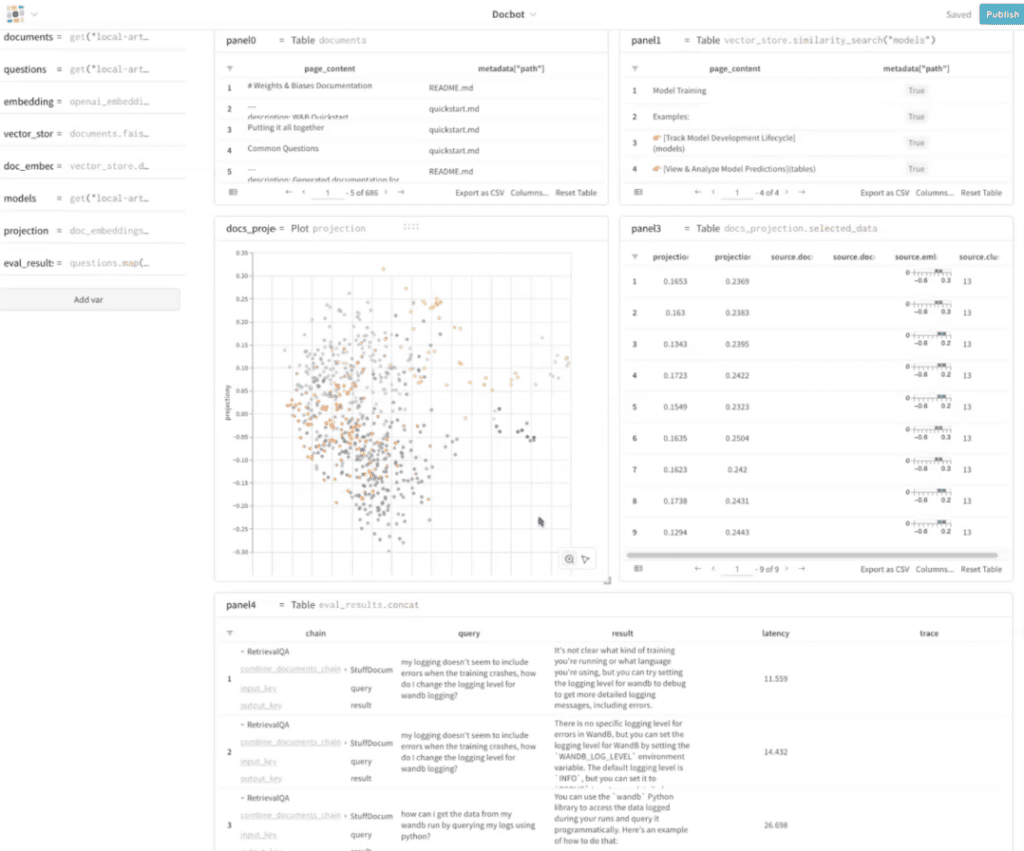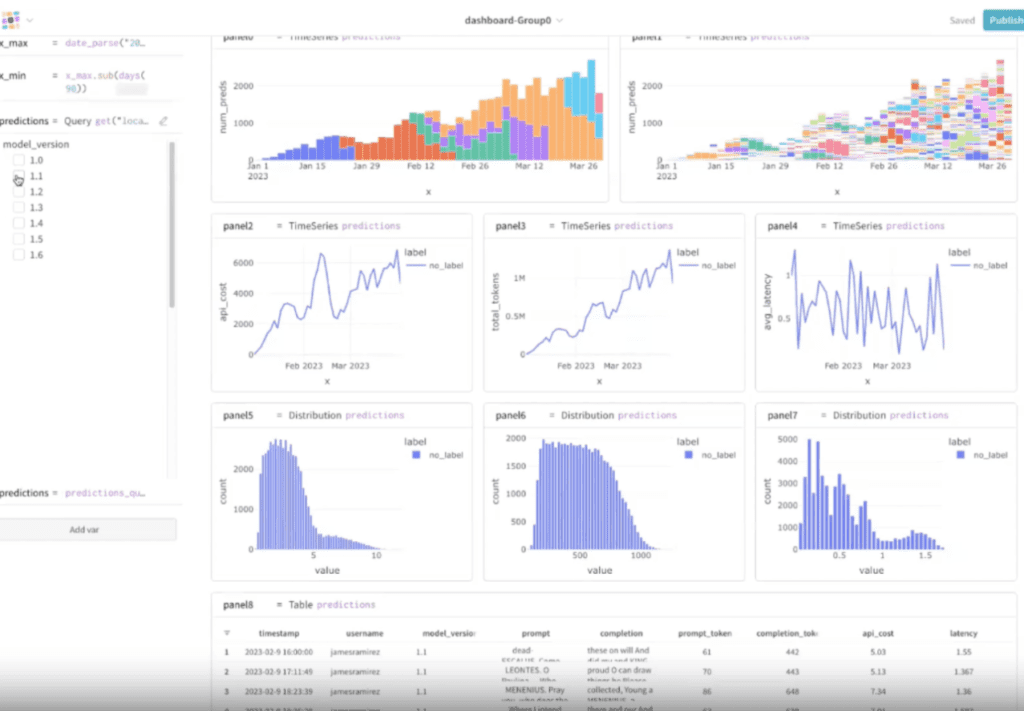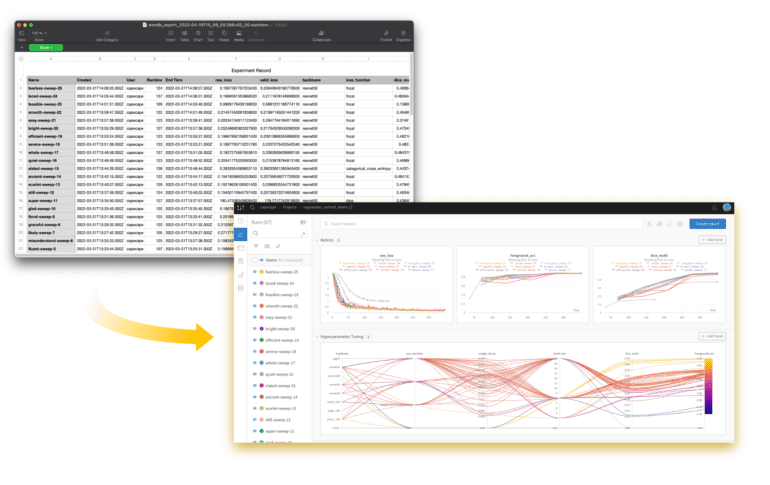TL;DR:
- Weights & Biases introduces W&B Weave and W&B Production Monitoring to simplify AI model development and monitoring.
- Weave is a powerful toolkit for customizing AI applications and creating interactive data visualizations.
- Weights & Biases utilized Weave internally to develop the Prompts tools and production monitoring capabilities.
- The Weave toolkit is available as an open-source LLMOps tool for universal usage.
- Production monitoring allows organizations to track metrics crucial to their AI models’ success.
- Monitoring helps manage costs, detect model drift, and address challenges like AI hallucination.
Main AI News:
San Francisco-based startup Weights & Biases is revolutionizing the field of artificial intelligence (AI) with its latest advancements. Today, the company introduces two cutting-edge capabilities aimed at simplifying the construction and supervision of machine learning (ML) models, thereby empowering organizations to maximize their potential.
Facilitating LLMOps Processes The Weights & Biases platform is a comprehensive suite of tools that facilitates the entire AI/ML development lifecycle. In April, the company introduced new features that enable LLMOps, a term denoting workflow operations tailored for the support and advancement of large language models (LLMs). To further enhance this offering, Weights & Biases unveils W&B Weave and W&B Production Monitoring, two additions that are set to streamline the implementation of AI models for production workloads.
Although officially announced today, Weave has been an integral part of Weights & Biases’ platform as it evolved over the past two and a half years. Shawn Lewis, Weights & Biases CTO and cofounder, explains that Weave represents a significant milestone in the company’s roadmap. It provides developers with a powerful toolkit for customizing their AI applications according to their specific problem domains. Moreover, Weave enhances the user experience by enabling data scientists to develop interactive data visualizations, making it an indispensable asset in the field of AI development.
Visualizing the Power of AI Lewis emphasizes that Weave was originally conceived as a tool to comprehend models and data through a visual and iterative user interface (UI). With its wealth of composable UI primitives, Weave empowers developers to construct AI applications with ease, while also enabling data scientists to create captivating visual experiences and interactive data visualizations. As evidence of its effectiveness, Weights & Biases utilized Weave internally to develop the Prompts tools, which were introduced in April. Moreover, Weave forms the foundation for the newly introduced production monitoring tools, further amplifying its significance in the AI ecosystem.
Open Source Empowerment Weave is not only freely available as an open-source LLMOps tool for universal usage but also seamlessly integrated into the Weights & Biases platform. This integration allows enterprise customers to incorporate visualizations into their overall AI development workflow, adding a new dimension of efficiency and effectiveness to their projects.

W&B Weave uses state-of-the-art techniques and visualizations, making it easy for developers to explore data, evaluate models and experiment with ML building blocks seamlessly. Source: Weights & Biases
Beyond Model Development: Monitoring for Success While building and deploying ML models are crucial steps in the AI lifecycle, monitoring them is equally essential. This is precisely where Weights & Biases’ production monitoring service excels. Lewis points out that this service is highly customizable, enabling organizations to track the metrics that truly matter to them. Typical metrics for any production system revolve around availability, latency, and performance. However, with LLMs, there is a unique set of additional metrics that organizations must monitor. Particularly, given the prevalence of third-party LLMs that charge based on usage, it becomes paramount to keep track of API calls to manage costs effectively.
The Challenge of Model Drift When it comes to non-LLM AI deployments, monitoring for model drift is a common concern. Organizations carefully track unexpected deviations from a baseline over time. However, in the case of LLMs and their generative AI capabilities, tracking model drift becomes more complex. Lewis asserts that there is no single measurement or number that can definitively identify drift or assess quality in a generative AI model used for tasks like article writing. This is where the versatility of production monitoring comes into play. In the context of article writing, for instance, organizations can choose to monitor how many AI-generated suggestions users integrate and how much time it takes to achieve the best result.
Tackling AI Hallucinations To address the challenge of AI hallucination, a phenomenon where AI models generate inaccurate or fictional content, retrieval-augmented generation (RAG) techniques have gained traction. These techniques utilize specific sources to provide context for the generated content. Lewis suggests that production monitoring can contribute to this effort by offering insightful visualizations in the monitoring dashboard, thereby empowering organizations to gain a deeper understanding of their AI systems. While it may not definitively identify hallucination, it equips users with the necessary information to form their own human judgment.




Production monitoring enables real-time metrics with the most relevant visualizations and flexible, dynamic querying for an organization’s particular use case. Source: Weights & Biases
Conclusion:
Weights & Biases’ latest capabilities significantly enhance AI development and monitoring for organizations. The Weave toolkit empowers developers to customize their AI applications and create engaging visual experiences. Additionally, the production monitoring service enables organizations to track crucial metrics, manage costs, and address challenges like model drift and AI hallucination. These advancements offer businesses a competitive edge in the dynamic AI market by ensuring efficient and effective AI model development and maintenance.

